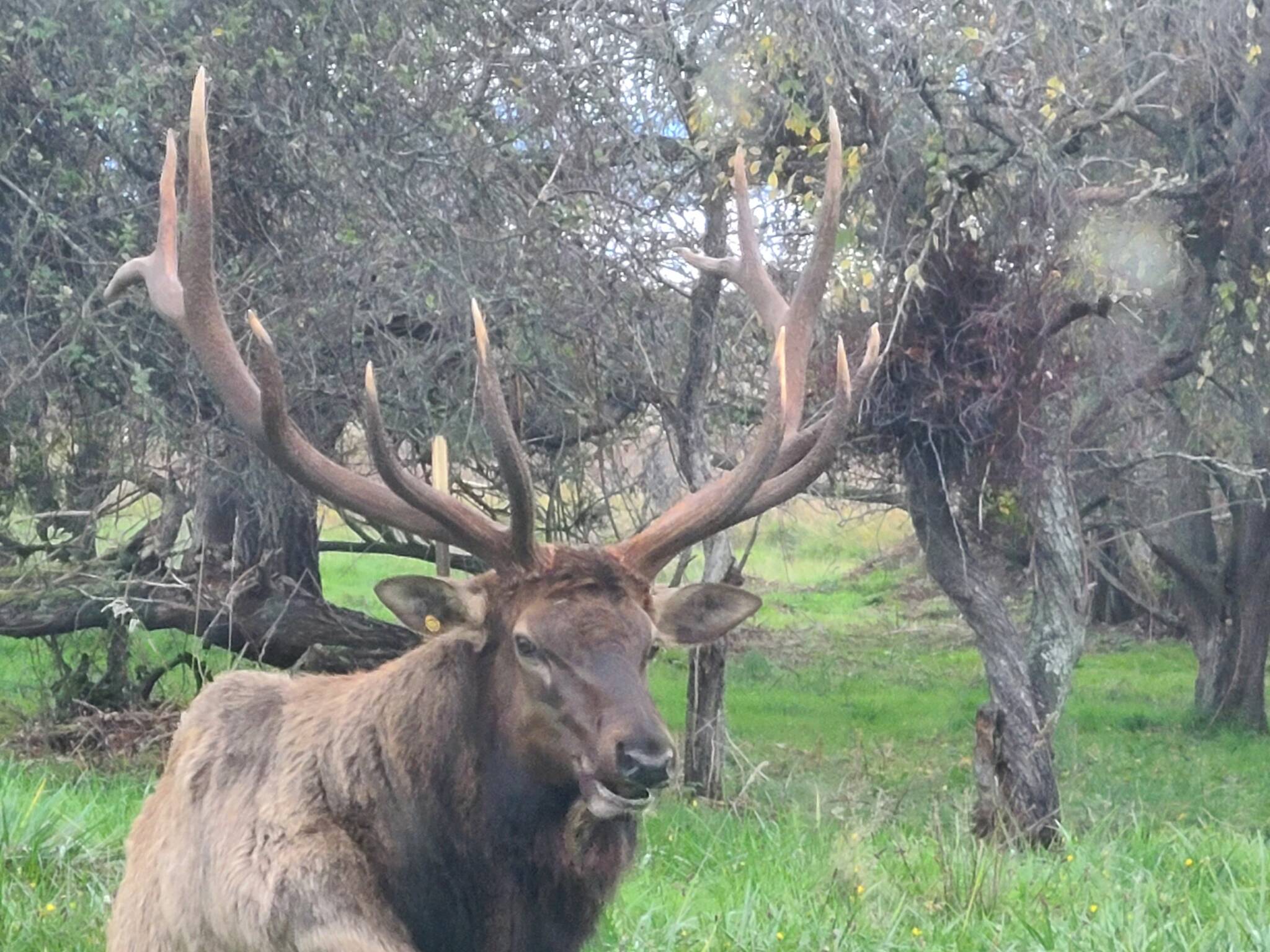A vicious rumor involving the supposed death of Bruiser was widely circulated on social media Wednesday, causing mass concern for the beloved Whidbey elk.
Ralph Downes, an enforcement officer for the state Department of Fish and Wildlife, is of the mind that you shouldn’t believe everything you read on Facebook, especially when the storyteller seems less than honest and attention-seeking.
He confirmed that the lone elk was sighted a few hours after the online hubbub happened. Despite recent entanglement with a series of different items, Bruiser is very much alive.
“The last I heard, he was tangled up in some branches or something like that,” Downes said.
He likened the ungulate’s propensity for getting stuck in foreign objects to eating popcorn and getting a kernel lodged in your tooth.
“Some of my favorites have been when he’s tangled up in bicycles,” Downes said.
Most recently, Downes convinced a homeowner to remove a rope swing that became an “elk hazard” for the brute.
A caller reported Bruiser had a tarp wrapped around his neck in November, a somewhat regular occurrence. During this time of year, he is getting ready to shed his antlers and may be rubbing them against the things he is getting stuck in.
The large bull elk has spent nearly a decade on Whidbey, sticking to the northeastern area of the island. The theory is that he traveled away from a herd that was living in Skagit County in search of his own space.
Worries that Bruiser might be lonely have died down some over the years, Downes said. The elk may be past his prime, but all signs point toward his being healthy.
“You can tell he’s moving a little slower,” Downes said. “You can tell he’s slowing down.”
Since he hasn’t had to compete for territory or a mate, Downes predicted that this is helping to contribute to Bruiser’s longevity.
According to National Geographic, elk in the wild can live to be up to 8 to 12 years old.
It’s likely that Bruiser has already surpassed this estimated lifespan.



